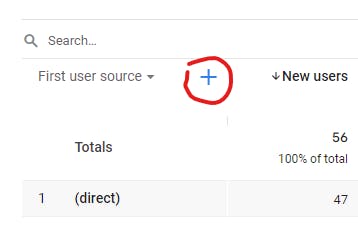Step-by-Step Guide: Leveraging Secondary Dimension in Google Analytics
Step-by-Step Guide: Leveraging Secondary Dimension in Google Analytics
Blog Article
Enhance Your Data Analysis Using Additional Dimension in Google Analytics
Checking out the capabilities of second dimensions in Google Analytics opens up a realm of possibilities for refining information evaluation. The capability to explore information even more past the surface area level presents a nuanced view that can shape strategic decisions. By layering added measurements onto main information sets, a more intricate narrative arises, shedding light on user communications and performance signs. This dynamic strategy to information exam holds the crucial to opening concealed patterns and trends that could change how organizations analyze their electronic footprint.
Recognizing Additional Dimensions
Secondary dimensions in Google Analytics refer to extra parameters that can be included to the primary measurement, permitting for an extra comprehensive evaluation of information (Secondary Dimension in Google Analytics). By incorporating secondary measurements, analysts can section and filter data to reveal patterns, fads, and connections that could not be noticeable when looking at the information as a whole.

Advantages of Making Use Of Second Measurements
When assessing data in Google Analytics, the application of additional measurements provides important understandings into customer habits and performance metrics. By including an additional measurement to your main data, you can delve much deeper into the attributes of your web site site visitors and their communications.
Furthermore, secondary measurements aid in identifying patterns and connections that might not be promptly evident when taking a look at the information in isolation. This deeper degree of evaluation can uncover useful details that can direct advertising and marketing methods, site optimization, and total service choices. In addition, additional dimensions boost the context of your key information, supplying an extra extensive sight of customer engagement and performance metrics. Generally, the use of secondary dimensions in Google Analytics can significantly improve the depth and high quality of your data analysis, resulting in more educated decision-making and enhanced results.
Exactly How to Include Secondary Measurements
By integrating additional measurements in Google Analytics, users can obtain deeper insights right into their data analysis process, allowing for more thorough assessment of customer actions and performance metrics. Including additional measurements is a straightforward procedure that can significantly boost the depth of evaluation. When in the record, situate the "Secondary measurement" tab above the information table.
Studying Information With Secondary Dimensions
Making use of second measurements in data analysis provides an extra comprehensive understanding of user behavior and performance metrics. By including an additional dimension to your main data established in Google Analytics, you can delve deeper right into the features of your website site visitors and their communications. For circumstances, combining the key dimension of 'source/medium' with the second measurement of 'touchdown page' can expose which specific pages are drawing in website traffic from various resources, aiding you maximize these web pages for much better interaction.

Essentially, examining data with second dimensions encourages you to get valuable insights into individual behavior, identify fads, and make notified decisions to boost the performance of your digital residential properties.
Finest Practices for Additional Dimensions
In data analysis, integrating second dimensions properly can significantly enhance the deepness of understandings stemmed from metrics and individual behavior patterns. When utilizing secondary dimensions in Google Analytics or any type of various other logical tool, it is essential to adhere to ideal practices to ensure the precision and importance of the information evaluation.
One trick ideal technique is to thoroughly choose second dimensions that match the key dimension being analyzed. Selecting secondary dimensions that provide extra context or more segmentation can supply a much more thorough understanding of the information. It is also important to avoid overcomplicating the evaluation by including way too many second dimensions, which might result in complication or dilution of insights.
Additionally, it is suggested to experiment with various combinations of key and secondary dimensions to reveal brand-new correlations and fads. Consistently assessing and refining the choice of additional measurements based on the specific goals of the evaluation can bring about even more actionable insights. By following these best practices, data analysts can leverage additional dimensions successfully to improve the total information evaluation process and decision-making capabilities.

Conclusion
Finally, incorporating second measurements in Google Analytics is important for a detailed data analysis method. By leveraging second measurements alongside key ones, marketing professionals and experts can reveal useful insights and connections that can educate decision-making and optimize digital marketing methods. Recognizing how to properly utilize additional measurements and following finest practices will certainly permit professionals to extract meaningful information and boost their overall efficiency metrics.
Additional measurements in Google image source Analytics refer to added criteria that can be included to the key dimension, permitting for a more detailed analysis of information. By integrating secondary measurements, analysts can sector and filter information to discover patterns, trends, and connections that might not be noticeable when looking at the data as a whole. Incorporating the main dimension of 'source/medium' with the second dimension of 'touchdown web page' can disclose which particular pages are bring in traffic from different sources, assisting page you optimize these pages for far better interaction.
One trick ideal method is to very carefully pick second dimensions that match the key measurement being analyzed. By complying with these ideal techniques, data experts can leverage second measurements successfully to boost the overall information evaluation procedure and decision-making abilities.
Report this page